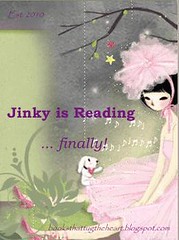(source)
Definition: The phrase “light of Christ” does not appear in the Bible, although the principles that apply to it are frequently mentioned therein. The precise phrase is found in Alma 28:14, Moro. 7:18, and D&C 88:7. Biblical phrases that are sometimes synonymous to the term “light of Christ” are “spirit of the Lord” and “light of life” (see, for example, John 1:4; 8:12). The “spirit of the Lord,” however, sometimes is used with reference to the Holy Ghost and so must not be taken in every case as having reference to the light of Christ.
The light of Christ is just what the words imply: enlightenment, knowledge, and an uplifting, ennobling, persevering influence that comes upon mankind because of Jesus Christ. For instance, Christ is “the true light that lighteth every man that cometh into the world” (D&C 93:2; see John 1:9). The light of Christ fills the “immensity of space” and is the means by which Christ is able to be “in all things, and is through all things, and is round about all things.” It “giveth life to all things” and is “the law by which all things are governed.” It is also “the light that quickeneth” man’s understanding (see D&C 88:6–13, 41). In this manner, the light of Christ is related to man’s conscience and tells him right from wrong (Moro. 7:12–19).
The light of Christ should not be confused with the personage of the Holy Ghost, for the light of Christ is not a personage at all. Its influence is preliminary to and preparatory to one’s receiving the Holy Ghost. The light of Christ will lead the honest soul who “hearkeneth to the voice” to find the true gospel and the true Church and thereby receive the Holy Ghost (see D&C 84:46–48). Additional references are Alma 19:6; 26:3; D&C 20:27.
~~~~~~~~~~~~~~~~~~~~~~~~
Money: The Hebrews appear to have been ignorant of coinage until the Persian period. Before that time gold and silver were used as a medium of exchange, but payments were made by weight. Hence the temptation arose to use false weights and false balances. Before the Exile sums of money were usually reckoned in shekels or talents. By a shekel we must always understand a shekel of silver, unless it is expressly stated to be of gold. In the Maccabean period the weight of a shekel was 218 grains (15.126 grams); in earlier times it may have been lighter.
The only coin, properly so called, mentioned in the Old Testament is the gold dram, bearing the figure of a crowned king who is kneeling and is holding in his right hand a spear and in his left a bow.
Simon Maccabaeus coined silver shekels and half-shekels, as well as bronze money. The shekel had on one side the figure of a cup, with the inscription “Shekel of Israel,” and on the other a branch with three buds and the words “Jerusalem the Holy.”
The following coins are mentioned in the New Testament:
- The drachme (Luke 15:8–9), the ordinary silver Greek coin, and the didrachmon (or double drachme) (Matt. 17:24), translated “half-shekel” in some Bibles, or “tribute money” in KJV.
- The stater (Matt. 17:27), originally of gold, but in New Testament times of silver, and equal to four drachmes. In Matt. 17:27, the KJV tanslates the word as “a piece of money.” The pieces of silver mentioned in Matt. 26:15; 27:3, 5–6 were probably staters.
- The lepton (or mite) (Mark 12:42; Luke 12:59; 21:2), the smallest bronze coin used by the Jews. Equaled one-half quadrans.
- The Roman silver denarius. The KJV always translates this word as “penny.”
- The assarion (Matt. 10:29; Luke 12:6), or farthing; a bronze coin originally one-tenth, but in New Testament times one-sixteenth, of a denarius.
- The kodrantes (Latin quadrans) (Matt. 5:26, where it is translated “farthing,” and Mark 12:42, where it is translated “mites”); equaled one-fourth assarion.
- The talent (Matt. 18:24; 25:15) and the mina (pounds) (Luke 19:13) are not coins but sums of money.





























































Another wonderful, inspiring post
ReplyDeleteI never knew the stuff about the money. Interesting. I hope you enjoyed General Conference last weekend.
ReplyDeleteLuAnn Braley
AJ's Hooligans @AtoZChallenge
Back Porchervations
I've enjoyed reading your posts. I found you through the A-Z Challenge. I'm now interested in getting one of your mysteries to read, as I also am a mystery writer - not yet published. Keep blogging! www.dianeweidenbenner.com
ReplyDelete